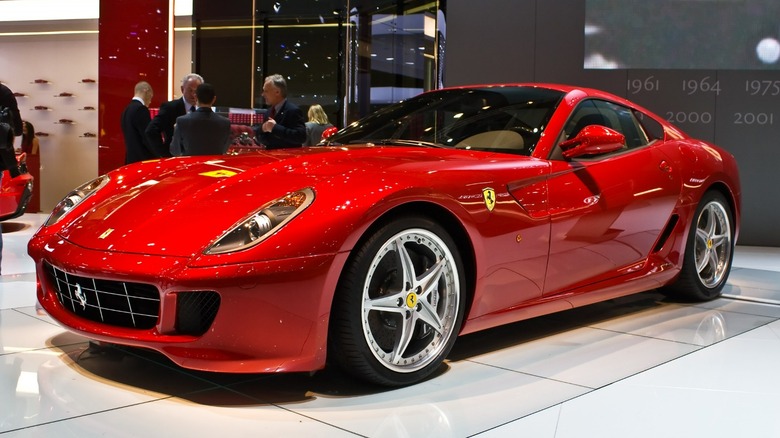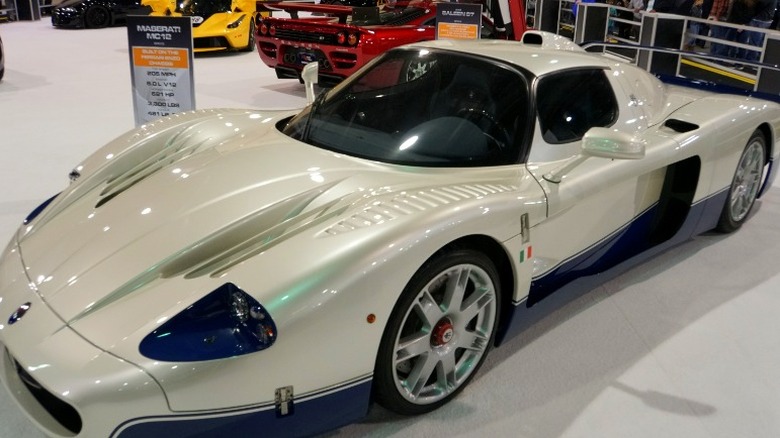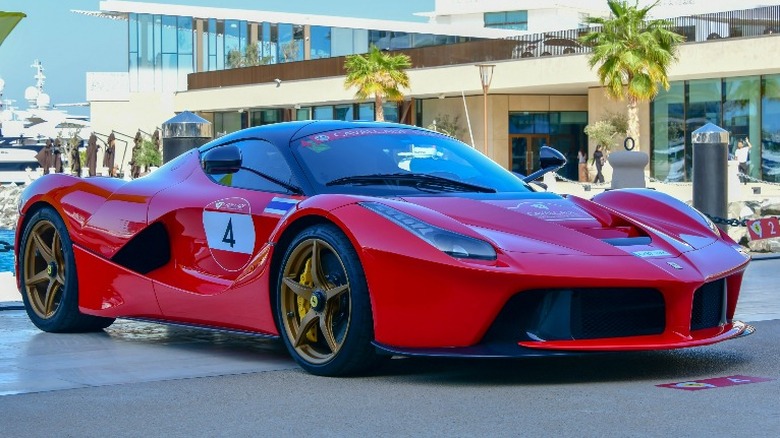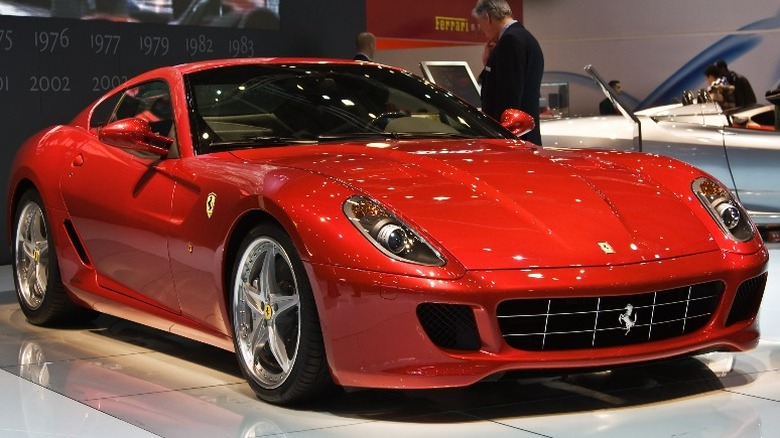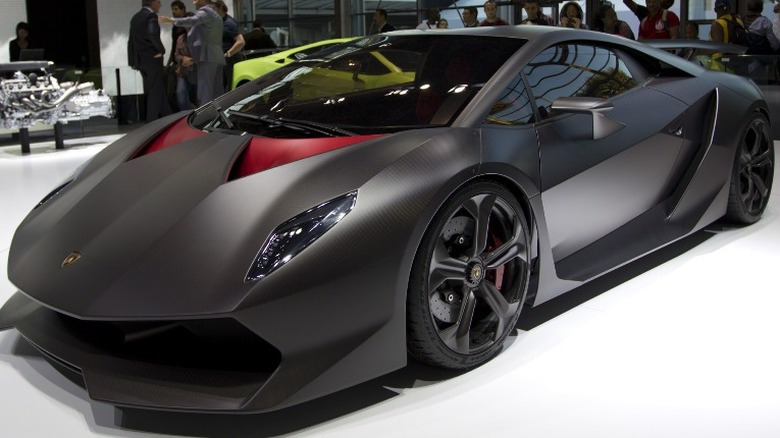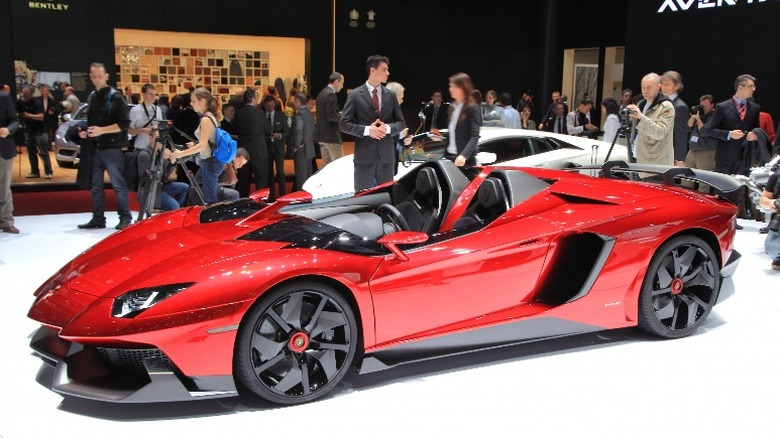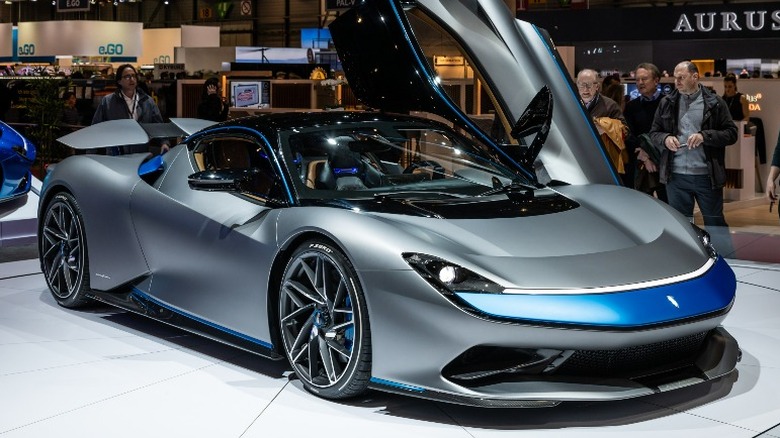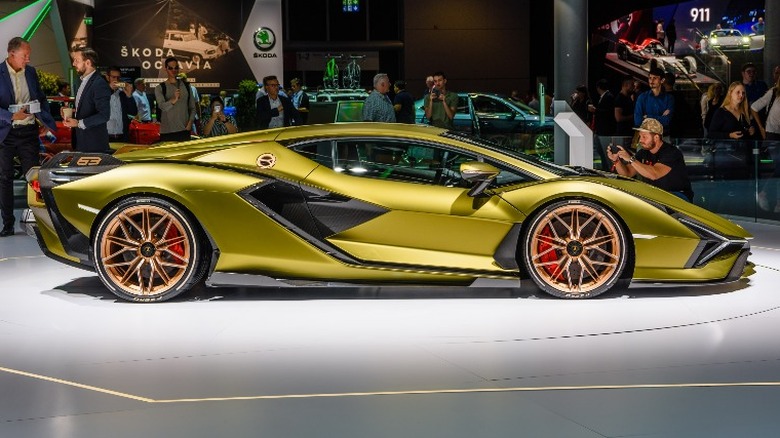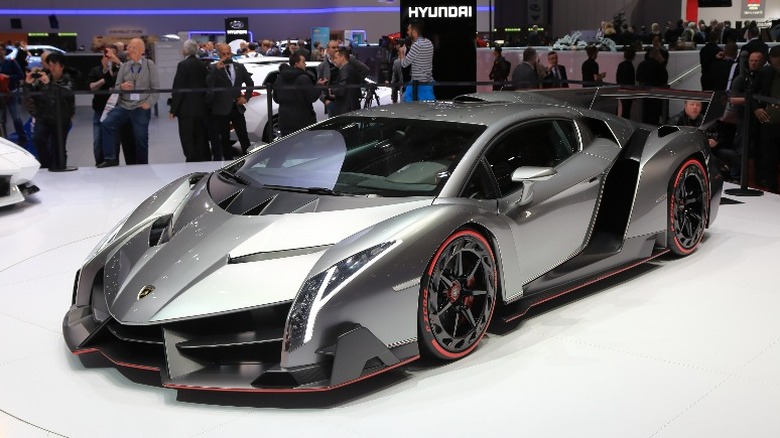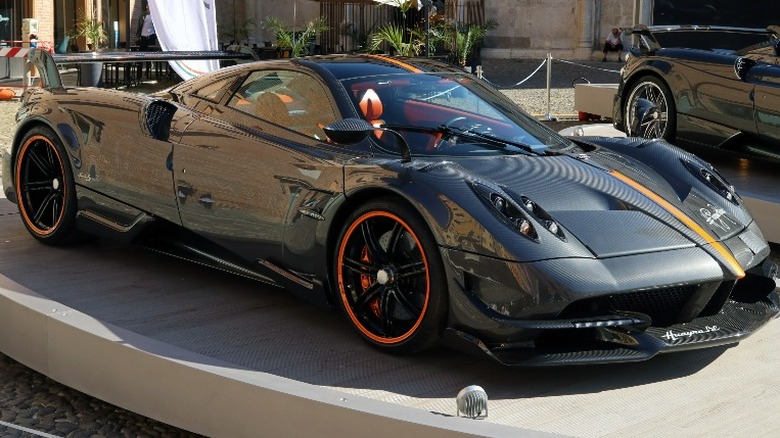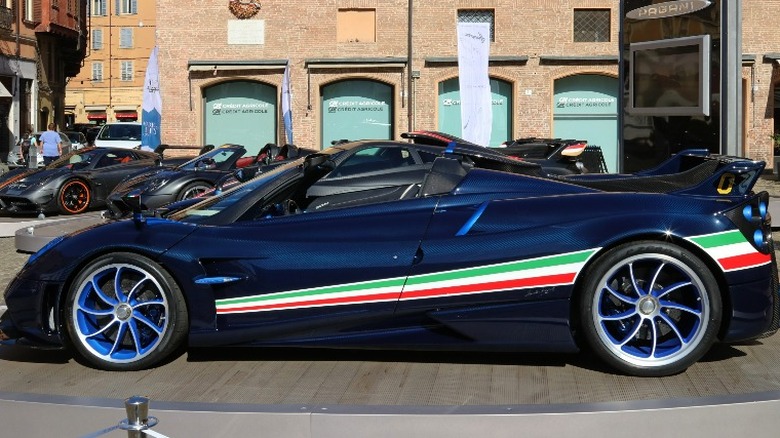The 10 Most Expensive Italian Sports Cars Ever Made
Ask any sports car enthusiast which country produces the most high-performance sports cars, and most will respond: Italy. Famous for pizza, pasta, and high fashion, Italy is also home to iconic sports car brands such as Ferrari, Lamborghini, Maserati, Pagani, and Alfa Romeo.
Among other supercar manufacturers such as Bugatti, Aston Martin, McLaren, and Mercedes, Italian sports car companies make some of the most expensive vehicles in the world. These masterpieces of technology generate the highest demand for automobiles from aficionados and collectors for several reasons but most importantly, for their prestige, exceptional performance, and rarity.
Not only are the sticker prices out of this world, but most are also expensive to maintain and inherently impractical as means of daily transportation. The sports cars are not designed to haul groceries or take the kids to the Saturday soccer game. Many of them are seldom driven and are kept in a garage to keep the mileage down and the value up. An Italian sports car blends speed with style, matched only by a few other supercars and hypercars in their class.
These are ten of the most expensive Italian sports cars that combine unparalleled beauty, extravagant luxury, and extraordinary power every sports car enthusiast dreams of owning.
Maserati MC12: $810,000
Maserati built its supercar, the MC12, in 2004 and 2005 by modifying a Ferrari Enzo and giving the car its own unique characteristics. Although the limited-edition MC-12 was built on the same chassis, the aerodynamics of each car differed significantly. Less aggressive than the Enzo, Maserati designed the MC-12 body for maximum downforce across all surfaces, making it wider, longer, and slightly taller than the Ferrari. The style featured a sharper nose, smoother curves, and a 78-inch-wide rear wing. The front fascia hosted large headlamps and a wide grille featuring Maserati's trademark "Trident" logo.
The MC12 also used a modified and less powerful version of the Ferrari Enzo powerplant. The 6-liter DOHC 48-valve V12 with aluminum block and heads and port fuel injection produces 624 horsepower at 7500 rpm and 481 lb-ft of torque at 5500 rpm. The Enzo V12 produced 651 hp and 485 lb-ft of torque. The six-speed manual transmission also came from the Ferrari, but Maserati engineers tuned it to different gear ratios.
The MC12 accelerated to 60 mph in 3.5 seconds, reached the quarter-mile in 11.4 seconds, and achieved a top speed of 205 mph. Although the coupe was less powerful than the Enzo and slower in a straight line, the Maserati was quicker through the turns, beating Ferrari's time around the Nurburgring Nordschleife. While the MC12 featured a high-quality leather and carbon-fiber interior, it lacked a sound system. But who needs tunes when you can listen to the music of a race-bred V-12?
Ferrari LaFerrari: $1.5 million
Introduced in 2013, the LaFerrari combines a DOHC 48-valve 6.3-liter V12 engine producing 789 horsepower and 516 lb-ft of torque with a 120kW electric motor generating 161 horsepower and 199 lb-ft of torque for a total of 950 bhp. The configuration with an electric motor reduces the car's fuel consumption by 40%, making the mid-engine, rear-wheel-drive, 2-door coupe an environmentally friendly hybrid vehicle.
While prospective buyers with the means to purchase the high-priced supercar might appreciate the ecologically beneficial characteristics of the hybrid, few would select the car for its fuel efficiency. The car's beauty and exceptional performance are more likely the features that attract buyers. When Car and Driver first conducted tests on the Ferrari track at Fiorano, it claimed the "LaFerrari produced the quickest acceleration to 150 mph of any production car we've ever tested. To 150 mph, the LaFerrari is a full 1.5 seconds quicker than the early Bugatti Veyron 16.4 we tested in 2008."
The LaFerrari reaches 60 mph in a blistering 2.5 seconds, the quarter-mile in 9.8 seconds at 150 mph, and tops out at 218 mph. While the acceleration is exceptional, the brakes are also equal to the task. The car decelerates from 70 to 0 mph in a mere 136 ft. with regenerative braking that erases up to 0.4g of braking force and oversized carbon-ceramic rotors with a dynamic aero that flips up the air brakes under severe deceleration.
Ferrari 599XX: $2 million
In 2010, Ferrari sold 29 of its 599XX sports cars, a track-only version of the 599 that included a package of six Ferrari-run track test days. The events were conducted with a pit crew, a team of Ferrari employees providing track-side support, and engineers collecting data for research and development purposes. Buyers paid $1.75 million for the car and the privilege of participating in the Ferrari tests (via Supercars.net).
Less than a year after its introduction, Ferrari announced that the 599XX had broken the 7-minute barrier at the Nürburgring. The 6-minute and 58-second lap time was the fastest ever recorded by a production-based car. In 2011, not satisfied with the car's performance, Ferrari introduced the "Evoluzione" package, an upgrade to the 599XX costing $250,000. Ferrari bumped the power of the 6.0L V12 by 20 horsepower to 740 horsepower at 9,000 rpm and increased the torque to 516 ft-lb at 6,500 rpm. The performance boost was achieved by rerouting the exhaust pipes from the back to the car's sides.
The most significant improvement implemented with the Evoluzione is the "active-aero" inspired by the Drag Reduction System (DRS) used in Formula 1 racing. A rear wing with two flaps electronically opens and closes based on factors determined by the car's telemetry in real-time. The system optimizes downforce, manages weight transfer, and increases grip on the racetrack. The Evoluzione improvements helped the Ferrari 599XX accelerate to 60 mph in 2.9 seconds and achieve a top speed of 196 mph.
Lamborghini Sesto Elemento: $2.2 million
Unveiled at the Paris Mondial de l'Automobile in 2010, the Lamborghini Sesto Elemento represented state-of-the-art automotive engineering for lightweight materials. Named after carbon, the sixth element in the periodic table, the supercar construction makes extensive use of carbon fiber. Lamborghini says the monocoque, frame, drive shaft, main suspension components, and even the rims are made of the robust, ultra-light substance. The high-tech supercar weighs in under the 1000-kilogram mark first achieved by Ferrari with the 2007 Millechili.
The aggressive-looking mid-engined supercar hosts the traditional Lambo wedge-shaped body full of aerodynamic fairings and vents. A naturally aspirated 5.2-liter V-10 producing 570 horsepower at 8000 rpm and 398 lb-ft of torque at 6500 rpm sends power to all four wheels via a 6-speed sequential transmission and permanent all-wheel-drive system. The combination of a powerful engine and extremely lightweight construction (power-to-weight ratio of only 1.75 kilograms per CV) propels the Sesto Elemento from 0 to 100 kph (62 mph) in a blistering 2.5 seconds and helps it reach an estimated top speed of 322 kph (200 mph).
What began as a concept car, the Lamborghini Sesto Elemento remains a limited-edition of 20 vehicles. The production units are essentially identical to the concept version without airbags or other safety equipment required for legal use on roads in Europe or the U.S. Lamborghini built the supercar for track use only. Interested buyers will now most likely need to spend much more than the original price of $2.2 million.
Lamborghini Aventador J: $2.8 million
At first glance, the Aventador J Roadster is distinguished from the standard Aventador by its wider front diffuser and top-less design, but there is much more. The carbon body parts, interior made with a patented "carbon skin," and the absence of windows, air conditioning, and radio ensure the J version is a much lighter vehicle. Lamborghini engineers redesigned the monocoque and added two safety bars behind the driver and passenger to create the topless Aventador and maintain structural integrity. However, while the absence of a windshield gives the supercar a unique appearance, it would indeed require the driver and passenger to wear a helmet at high speeds.
Lamborghini has a long tradition of utilizing cutting-edge technologies to optimize aerodynamics and minimize weight, primarily using carbon fiber materials. The Aventador J was no exception. The roofless design called for a unique material in the cabin to ward off damage from foul weather. The designers at Lamborghini developed a new patented use of carbon fiber to protect the upholstery. They soaked woven carbon fibers in a custom epoxy resin to keep the material soft, making it ideal for use on the seats, dashboard, and door panels.
The Aventador J features the same powerplant as its roofed sibling, a naturally aspirated 6.5-liter V12 engine that produces 691 bhp at 8,250 rpm and 509 lb-ft at 5,500 rpm. The rare, one-off supercar achieves a top speed of 186 mph, sending power to all four wheels equipped with carbon-ceramic brakes.
Pininfarina Battista: $2.9 Million
Founded in 1930, Italian car designer and coachbuilder Pininfarina has a long history of styling exotic sports cars, including over 60 Ferraris and several models for Maserati, Alfa Romeo, Peugeot, and others. The Battista is the automaker's first complete design and production automobile, an electric hypercar that boasts 1,900 horsepower and 1,697 lb-ft of torque.
While Pininfarina had years of experience designing the carrozzeria (body) for exotic high-performance sports cars, building a car from scratch presents a different challenge. So, the company collaborated with Rimac for the carbon-fiber structure and the powertrain. The Italian coachbuilder tweaked the underpinnings to distinguish them from the Rimac and offer a unique driving experience. The EV uses a T-shaped battery pack that accounts for a third of the vehicle's 4,400-pound curb weight, and the 6,960 lithium-ion cells provide a total gross capacity of 120 kWh. Electrical energy is sent to four electric motors, one at each wheel. Pininfarina estimates the batteries will provide a range of 230 miles.
While the battery capacity is impressive, buyers are more likely excited by the sports car's speed and handling performance. The Battista blows away the internal-combustion-engine-powered supercars, accelerating to 62 miles per hour in less than two seconds, and reaches a top speed of about 217 miles per hour. Pininfarina plans to make only 150 units, each custom-built at the automaker's facility in Turin, Italy. Motor Trend claimed, the Pininfarina Battista "is your first look at the next 20 years of Italian supercars.
Lamborghini SIAN FKP 37: $3.6 million
Lamborghini's first-ever gasoline-electric hybrid boasts 807 horsepower, making it the most powerful Lamborghini road car ever built. Introduced in 2019, the SIAN FKP 37 is also the first supercar that features the power of a 6.5-liter V12 producing 774-hp and 531 lb-ft of torque and hybrid technology based on supercapacitors.
The supercapacitor technology shows great promise for the future of high-performance hybrids. In simple terms, a supercapacitor stores electrical energy in a static state, unlike a traditional battery that binds energy in a chemical reaction. It can hold more energy than a typical lithium-ion battery of the same size and recharges almost instantly. Supercapacitors are more durable than regular batteries and operate well at extreme temperatures. However, supercapacitors self-discharge more quickly, losing as much as ten times more energy than traditional batteries over a 30-day period. Their cells operate at a lower voltage, and they are much more expensive than traditional batteries.
In the Sián, the 34-horsepower electric motor is mounted to the side of the automated manual transmission. The power might seem low (even a Prius Prime boasts 95 horsepower of electric power), but the motor is not designed to power the Lamborghini with its internal combustion engine shut down. The electric motor provides instant torque fill at speeds of up to 80 mph, helping the Lamborghini Sián accelerate to 60 mph in 2.8 seconds and hit a top speed of 220 mph.
Lamborghini Veneno Roadster: $4.5 million
In 2013, Lamborghini celebrated the company's 50th anniversary by introducing the Veneno coupe, followed by the Roadster version a year later. The two supercars look nearly identical (except for the top), with a unique exterior designed to reduce drag and maximize handling. The pointed front fascia promotes airflow and augments downforce while the front and rear arches direct air around the car to reduce lift and generate more downforce. Underneath, the smooth body ensures uninterrupted airflow, and the large carbon-fiber 3-position spoiler adds rear downforce.
Based on the Aventador, the Roadster used the same monocoque chassis design, but, along with all the exterior parts, it was made with carbon fiber. The Roadster's interior is also filled with carbon fiber to help keep the weight down, but the seats and dashboard have Alcantara to add a touch of luxury. Developed from the Aventador's powerplant, a 6.5-liter naturally aspirated V-12 engine mid-mounted behind the seats generates 750 horsepower at 8,400 rpm and 507 lb-ft of torque at 5,500 rpm. Power is sent to all four wheels via a seven-speed ISR (Independent Shifting Rods) gearbox that Lamborghini claims shifts 50% faster than a DCT (Dual Clutch Transmission). Lamborghini achieved more power for both the coupe and the roadster by enlarging the air intakes and modifying the exhaust system. The limited-edition hypercar accelerates from 0 to 62 mph in a blistering 2.9 seconds and reaches a top speed of 221 mph. Lamborghini made only nine Veneno Roadsters, each with an original price tag of $4.5 million.
Pagani Imola: $5.4 million
Pagani named its most extreme performance car after the historic Italian racetrack, Autodromo International Enzo and Dino Ferrari in Imola, where the automaker fine-tuned the car's "racing temperament" during 16,000km of testing at racing speed. The Imola is powered by the same Merc-AMG 6.0-liter, twin-turbo V12 that powers the other Pagani supercars, only with an upgrade to 827 horsepower and 811 lb-ft of torque.
While the Imola boasts impressive credentials for power, the aerodynamic shape is perhaps the car's defining characteristic. Horacio Pagani, founder and chief designer of Pagani Automobili S.p.A. explains the company's priorities in designing the Imola: "The aerodynamic technology behind the Pagani Imola is evident in three of its key features. The general outline, the internal aerodynamics, and the external aerodynamic details, such as the fins, winglets and deflectors. We can't say that it's an elegant car. We wanted an efficient vehicle, and just as you'd expect if you were looking at an F1 single-seater, this led us to design a car with additional aerodynamic features."
Although the Imola's power seems to fall short of the latest all-electric hypercars, such as the Pininfarina Battista, which generates 1,900 horsepower, the Pagani weighs a mere 1,246kg. Pagani achieved weight savings with a carbo-titanium monocoque and a unique paint system that saves 5kg. The Pininfarina Battista weighing in at 1995 kg, requires more power to match the Imola's performance. Pagani is only making five of the Huayra Imola supercars, and they are all sold.
Pagani Huayra Tricolore: $6.7 million
Pagani introduced the Tricolore limited-edition supercar as a tribute to Frecce Tricolori, the Italian Air Force's aerobatic training group. The special version of the Huayra features a unique bodywork configuration with no roof and an overhead intake scoop. Pagani claims the entire car's design was influenced by the flying group, including the reworked interior inspired by the cockpit of the Frecce Tricolori Aermacchi MB-339A. Pagani billet machined all the interior's aluminum components from aerospace-grade material, and the seats display green, white, and red stripe inserts, the Italian flag colors.
The Tricolore is powered by a twin-turbo 6.0-liter V12 specifically designed for Pagani by Mercedes AMG, producing 840 horsepower at 5900 rpm (40 more than the Huayra BC) and 811 lb-ft at 5600 rpm. Power is sent to the rear wheels via an Xtrac AMT transverse seven-speed single-clutch sequential transmission. Pagani claims the gearbox weighs 35 percent less than an equivalent dual-clutch gearbox.
The automaker implemented a more pronounced front splitter than used in other Huayra models. A new aerodynamic profile ensured maximum downforce. The front bumper with side extractors improved intercooler efficiency and adequate heat exchange for the heat-generating V12. The suspension geometry reduces dive and roll effects during braking and cornering, while shock absorbers work with active aerodynamics to enhance the vehicle's stability. Only three Huayra Tricolore cars are planned, each priced from $6.7 million.
